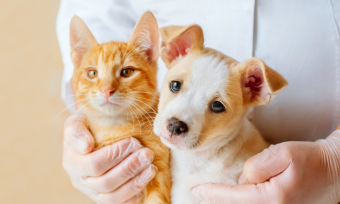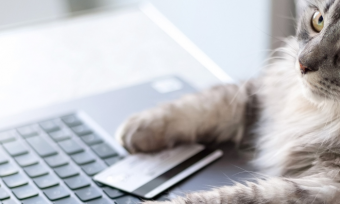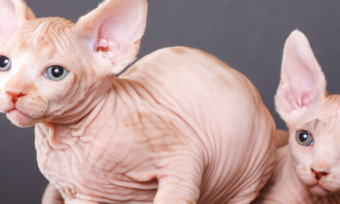
All canines may be created equal, but their dog breed exercise requirements aren’t. Different breeds have different needs and, other than many-breed mongrels and hybrid dog breeds, they all fall into seven dog groups.
PS: A dog DNA test can be a fun way to discover the breed your dog, but you can also make an educated guess based on their energy levels and features. After all, as your doggie’s pet parent, you know them best!
Check out the seven dog groups before we jump to their fitness needs:
| 1 | Toy Group |
| 2 | Terrier Group |
| 3 | Gundog Group |
| 4 | Hound Group |
| 5 | Working Dog Group |
| 6 | Utility Group |
| 7 | Non-Sporting Group |
Dog breed exercise requirements by group
If you want a pet dog you can lounge on the couch with, broken only by a short walk around the block, then Toys are an ideal dog. But they’re not your only choice. In this article, we’re covering all the groups recognised by Dogs NZ, the New Zealand dog registry.
→Related article: Dog Ownership in NZ: What You Need to Know
Toy dog group
Toys are small dogs that make great indoor companions because they’re virtually ‘living’ plush toys, with low energy levels and exercise needs. All you should need to do is give your toy a 10-minute session of fetch daily, or a short walk.
| Affenpinscher | Coton De Tulear | Maltese |
| Australian Silky Terrier | English Toy Terrier (black & tan) | Miniature Pinscher |
| Bichon Frise | Griffon Bruxellois | Papillon |
| Biewer Terrier | Havanese | Pekingese |
| Bolognese | Italian Greyhound | Pomeranian |
| Cavalier King Charles Spaniel | Japanese Chin | Pug |
| Chihuahua | King Charles Spaniel | Russian Toy (Russkiy Toy) |
| Chinese Crested Dog | Lowchen | Yorkshire Terrier |
Terrier dog group
If you live with a terrier you’ll know how lively these guys can be, and that’s because of their history. Terriers were originally bred to sniff and dig down into the dens of prey, so they could help their humans on hunting expeditions. As a result, they have built-in dig and sniff instincts.
Back home, though, you don’t want them digging up your rose garden or your couch stuffing. In other words, make sure to allocate 30 minutes to an hour of play or exercise daily. A walk will do the trick, which, of course, is good for you too!
Also, consider giving your terrier toys to help them burn up their energy physically and mentally.
A list of terriers:
| Airedale Terrier | Fox Terrier (smooth) | Parson Russell Terrier |
| American Staffordshire Terrier | German Hunting Terrier | Scottish Terrier |
| Australian Terrier | Glen Of Imaal Terrier | Sealyham Terrier |
| Bedlington Terrier | Irish Terrier | Skye Terrier |
| Border Terrier | Jack Russell Terrier | Soft Coated Wheaten Terrier |
| Bull Terrier | Kerry Blue Terrier | Staffordshire Bull Terrier |
| Bull Terrier (miniature) | Lakeland Terrier | Tenterfield Terrier |
| Cairn Terrier | Manchester Terrier | Welsh Terrier |
| Cesky Terrier | Norfolk Terrier | West Highland White Terrier |
| Dandie Dinmont Terrier | Norwich Terrier |
Gundog group
Gundogs (e.g. golden retriever and labrador) are highly trainable and intelligent. They’ve been bred to work alongside humans. In fact, they get their name from their original job: helping gun-toting hunters to bring down prey.
As a result, these perky pups are inquisitive, have a great sense of smell and can easily pinpoint where the prey (or frisbee) lands.
Dog breed exercise requirements for this group is one to two hours of exercise daily. They love a brisk walk and you can also take them hiking and camping in the great outdoors.
Here’s a list of gundogs:
| American Cocker Spaniel | Field Spaniel | Italian Spinone |
| Bracco Italiano | Flat-coated Retriever | Labrador Retriever |
| Brittany | German Shorthaired Pointer | Lagotto Romagnolo |
| Cesky Fousek | German Wirehaired Pointer | Large Munsterlander |
| Chesapeake Bay Retriever | Golden Retriever | Nova Scotia Duck Tolling Retriever |
| Clumber Spaniel | Gordon Setter | Pointer |
| Cocker Spaniel | Hungarian Vizsla | Spanish Water Dog |
| Curly Coated Retriever | Hungarian Wire Haired Vizsla | Sussex Spaniel |
| Deutsch Langhaar | Irish Red & White Setter | Weimaraner |
| English Setter | Irish Setter | Welsh Springer Spaniel |
| English Springer Spaniel | Irish Water Spaniel | Wirehaired Slovakian Pointer |
Hound dog group
One hound in particular – the greyhound – has a rep for racing, which might create the image of being energetic 24/7, but this isn’t true at all. In fact, greyhounds and other sighthounds will only expend brief spurts of energy before they just want to chill.
Hounds fall into two sub-groups: firstly, scent-hounds (like the neighbour in Lady and the Tramp) and secondly, sighthounds (such as greyhounds that go ga-ga for electronic racing rabbits).
- Sighthounds. All these pups need is 20-30 minutes of exercise daily, such as a walk in the park or around your neighbourhood. Then you can both tuck in for some quality couch time.
- Scent-hounds. On the other hand, scent-hounds need more exercise to tucker them out than sighthounds. You’ll need to schedule one hour each day to exercise your hound, but that can be broken into two 30-minute sessions.
Here’s a list of hounds:
| Afghan Hound | Dachshund | Otterhound |
| Azawakh | Deerhound | Peruvian Hairless |
| Basenji | Finnish Spitz | Petit Basset Griffon Vendeen |
| Basset Fauve De Bretagne | Foxhound | Pharaoh Hound |
| Basset Hound | Grand Basset Griffon Vendeen | Portuguese Podengo |
| Beagle | Greyhound | Redbone Coonhound |
| Black And Tan Coonhound | Hamiltonstovare | Rhodesian Ridgeback |
| Bloodhound | Harrier | Saluki |
| Bluetick Coonhound | Ibizan Hound | Sloughi |
| Borzoi | Irish Wolfhound | Thai Ridgeback Dog |
| Cirneco Dell Etna | Norwegian Elkhound | Whippet |
Working dog group
Working dogs have some of the highest dog breed exercise requirements on the planet, so if you’re an indoorsy type they might not be your ideal choice.
On the other hand, if you love loooonnnng jogs and hiking (or you’re a sheep farmer in need of a herder) this is your pup. Also known as herding dogs, this group is another that is historically bred to work with humans, keeping our livestock safe and stopping them from wandering.
Historically, this would have meant hours and hours and hours of running and herding tirelessly each day. And although these same dogs now live happily as pets, they still need to burn large amounts of energy.
Working dogs need one to two hours of exercise daily, and three-quarters of this time needs to be spent doing high-energy exercise, like running or agility sports. Plus, in addition to their dog breed exercise requirements, this group has a high mental exercise requirement. Training and puzzle games are good options.
Here’s a list of working dogs:
| Australian Cattle Dog | Collie | Miniature American Shepherd |
| Australian Kelpie | Czechoslovakian Wolfdog | New Zealand Huntaway |
| Australian Shepherd | Dutch Shepherd Dog | Norwegian Buhund |
| Australian Stumpy Tail Cattle Dog | Finnish Lapphund | Old English Sheepdog |
| Bearded Collie | German Shepherd Dog | Polish Lowland Sheepdog |
| Beauceron | Hungarian Puli | Pumi |
| Belgian Shepherd | Icelandic Sheepdog | Pyrenean Sheepdog – Long Haired |
| Bergamasco | Komondor | Shetland Sheepdog |
| Border Collie | Kuvasz | Swedish Lapphund |
| Bouvier Des Flandres | Maremma Sheepdog | Swedish Vallhund |
| Briard |
Utility dog group
Because utility dogs have high stamina they can really go the extra mile. They’re famous for helping people in trying times. For example, the Saint Bernard, which rescues lost hikers in snowy mountains. Or huskies that work as sled dogs.
Choose moderately intense sports and give your pooch one to two hours of daily exercise. For example, they’re less about jumping and darting and more about that slow and steady toil up the mountain path.
Here’s a list of utility dogs:
| Akita | German Pinscher | Rottweiler |
| Alaskan Malamute | Great Swiss Mountain Dog | Samoyed |
| Anatolian Shepherd Dog | Italian Corso Dog | Schnauzer |
| Bernese Mountain Dog | Japanese Akita | Schnauzer (giant) |
| Black Russian Terrier | Kangal Dog | Schnauzer (miniature) |
| Boxer | Landseer (European Continental Type) | Shiba Inu |
| Bullmastiff | Leonberger | Shikoku |
| Canadian Eskimo Dog | Mastiff | Siberian Husky |
| Caucasian Shepherd Dog | Neapolitan Mastiff | Spanish Mastiff |
| Central Asian Shepherd Dog | Newfoundland | Saint Bernard |
| Dobermann | Portuguese Water Dog | Tibetan Mastiff |
| Dogue De Bordeaux | Pyrenean Mastiff | Tornjak |
| Estrela Mountain Dog | Pyrenean Mountain Dog | Yakutian Laika |
Non-sporting dog group
Non-sporting dogs are an interesting batch – the group includes the Dalmatian and Great Dane, but also the Shih Tzu. As diverse as the non-sporting group is, so too are their dog breed exercise requirements.
Giant breeds like the Great Dane, for example, only need 30 to 45 minutes of low-energy exercise daily. A stroll on the beach or in the park is enough to do the trick.
On the other hand, dogs like poodles have more stamina and need up to an hour of exercise daily. This can be broken into two or three sessions, so it’s still a walk in the park.
Here’s a list of non-sporting dogs:
| Boston Terrier | German Spitz (Klein) | Poodle |
| Bulldog | German Spitz (Mittel) | Schipperke |
| Canaan Dog | Great Dane | Shar Pei |
| Chow Chow | Japanese Spitz | Shih Tzu |
| Dalmatian | Karelian Bear Dog | Tibetan Spaniel |
| Eurasier | Keeshond | Tibetan Terrier |
| French Bulldog | Lhasa Apso | Xoloitzcuintle |
Still not sure? Then check out these added factors to consider below.
Health and dog breed exercise requirements
Besides being part of a dog breed group, every dog is an individual with individual needs. So in addition to dog breed exercise requirements, here are some factors to consider, pooch by pooch:
-
- Brachycephalic breeds. If your dog’s a flat-faced breed this needs to factor into how much and how intensely they exercise. These pups often have breathing problems, so can overheat or even asphyxiate from the wrong amount or type of physical exertion.
- Puppies. Like humans, dogs don’t need the same type or amount of exercise when they’re young as when they’re adults. Their musculoskeletal systems are still developing, so they mustn’t be put under undue stress, or they risk ligament and joint problems later in life.
- Giant dog breeds. The biggest dog breeds naturally have the biggest bones, as well as crazy growth spurts. Because of this, these breeds often have musculoskeletal conditions, such as hip dysplasia, which limits the types of exercise that’s good for them.
- Musculoskeletal conditions. It’s not only big breeds that can experience bone, joint and muscle issues – they can affect any dog.
Compare pet insurance with Canstar!

About the reviewer of this page
This report was reviewed by Canstar Content Producer, Andrew Broadley. Andrew is an experienced writer with a wide range of industry experience. Starting out, he cut his teeth working as a writer for print and online magazines, and he has worked in both journalism and editorial roles. His content has covered lifestyle and culture, marketing and, more recently, finance for Canstar.
Enjoy reading this article?
You can like us on Facebook and get social, or sign up to receive more news like this straight to your inbox.
By subscribing you agree to the Canstar Privacy Policy







Share this article